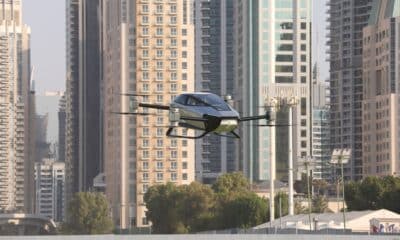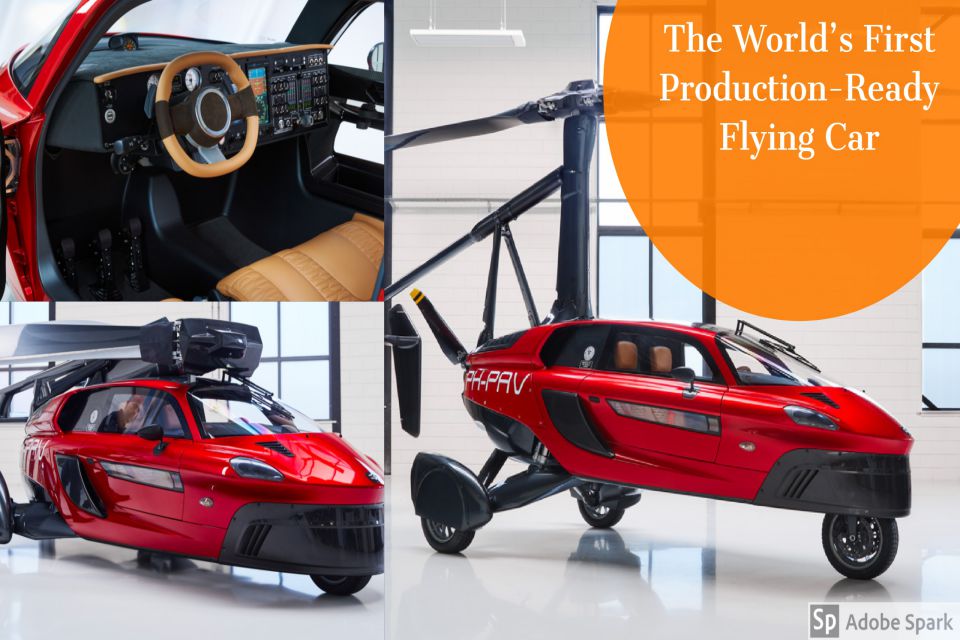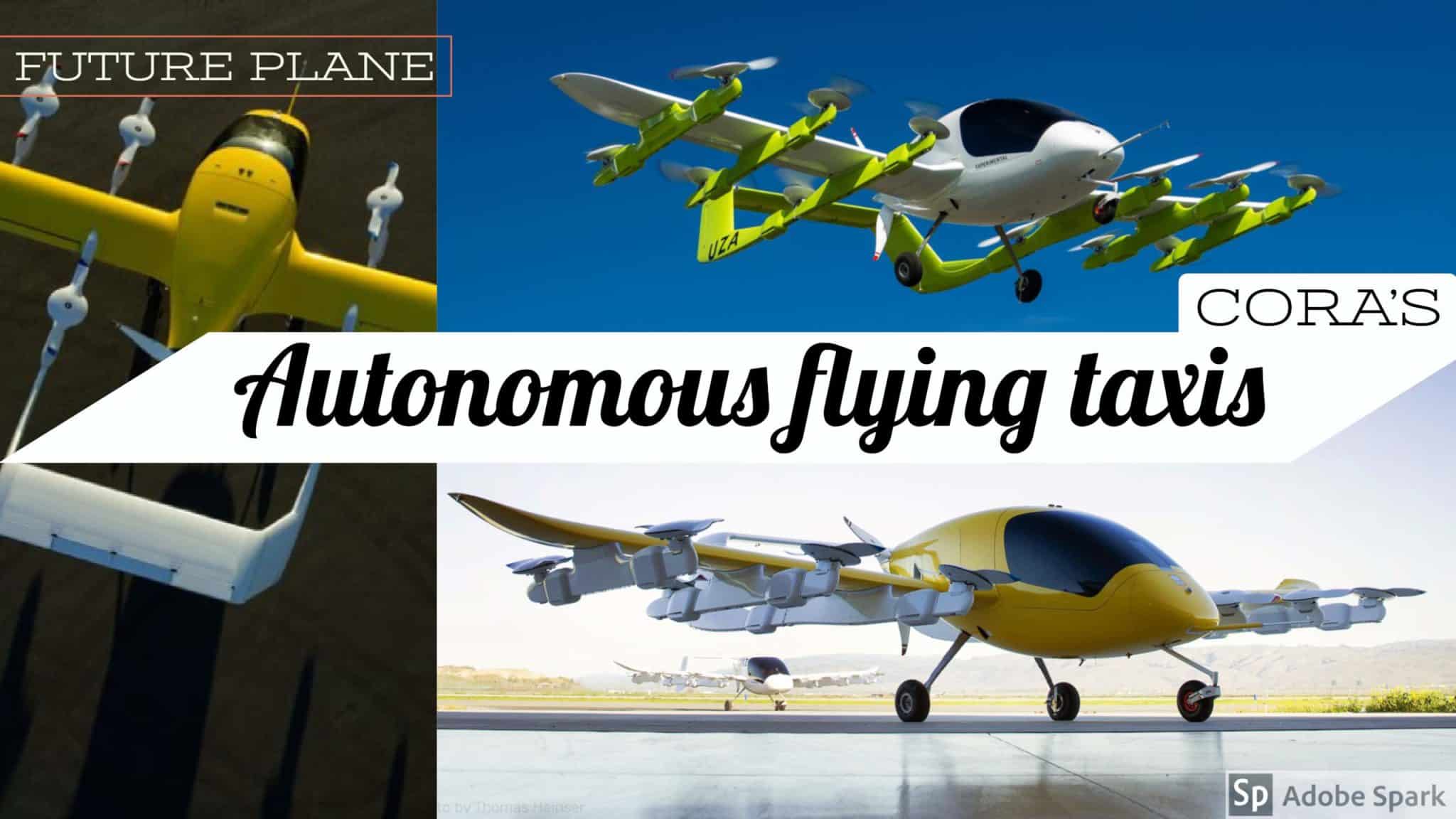Aviation
World’s first ‘fly and drive car’ ready by 2021
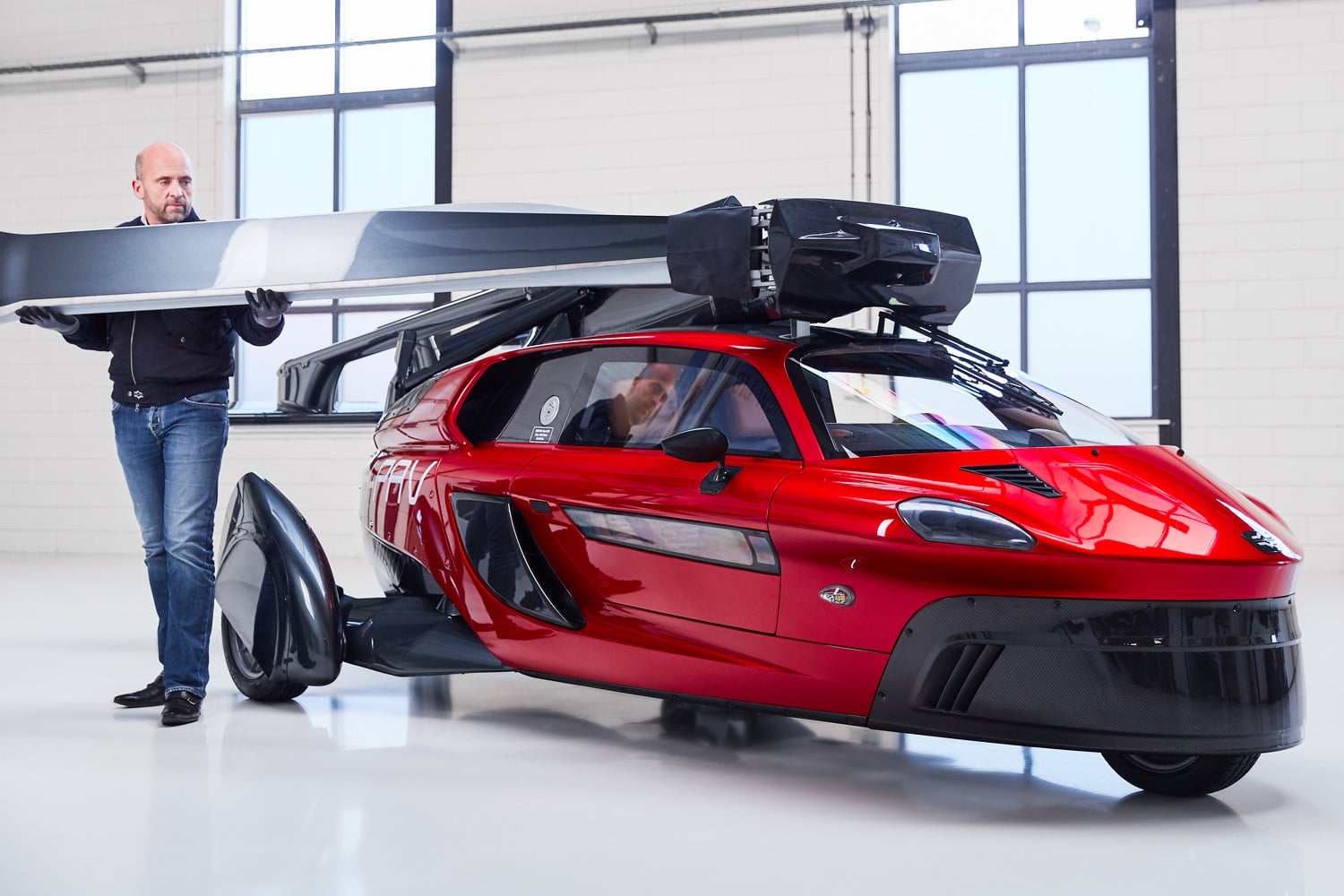
World’s first ‘fly and drive car’ ready by 2021 :According to Daily mail It has been over century in the making, but the world’s first ‘fly and drive car’ is set to make its US debut Tuesday night in Miami, Florida.
Called Pioneer Personal Air Landing Vehicle, or PAL-V, this flying vehicle is equipped with retractable overhead and rear propellers and can cruise at an altitude as high as 12,500 feet.
It uses automobile gasoline and tops speeds of 200 miles per hour in the air and 100 mile per hour on the ground.
The Dutch-made machine is already in production and is selling for $599,000 with 70 pre-orders to-date – the first delivery is expected to be in 2021.
PAL-V will go on display at an event entitled: ‘Miami 2020 and Beyond’. The flying car seats two people has 230hp and a four-cylinder engine. The two-seater vehicle converts from a three-wheeled car to a gyrocopter in just 10 minutes, and can go from 0 to 60 mph in under eight seconds.
Maxim magazine selected PAL-V in 2017 as the most likely company to deliver a ‘real’ flying car and two years later that prediction has come true.
Embraer and American Airlines Sign Contract for 15 E175s
‘While other flying car manufacturers’ concepts require modified regulations and in many cases not yet existing technologies, PAL-V deliberately chose to engineer, design and build a flying car with proven technologies and fully compliant with existing regulations.’
It is made of carbon fiber, titanium, and aluminium and weighs 1,500 pounds, and requires a 540 feet runway for take-off and just 100 feet for landing.
The craft is fitted with a similar handling system to that of a motorbike, which relies on the driver tilting the vehicle with a control stick both on the ground and in the air.
BRITISH AIRWAYS’ A350 GEARS UP FOR ITS FIRST LONG HAUL FLIGHT TO DUBAI
‘Flying cars have been in movies many, many times and they will be available next year,’ Dingemanse told The Associated Press. A slightly cheaper version to be made next – the Pal-V Liberty Sport – has a price tag of $335,000.
The firm has designed the car so at the flick of a button the blades fold down and gather like a bat’s wings on the top. It incorporates a 2005 breakthrough, when Dutch company Carver invented a tilting system for three-wheelers, to counter Pal-V’s high center of gravity and make it roadworthy.
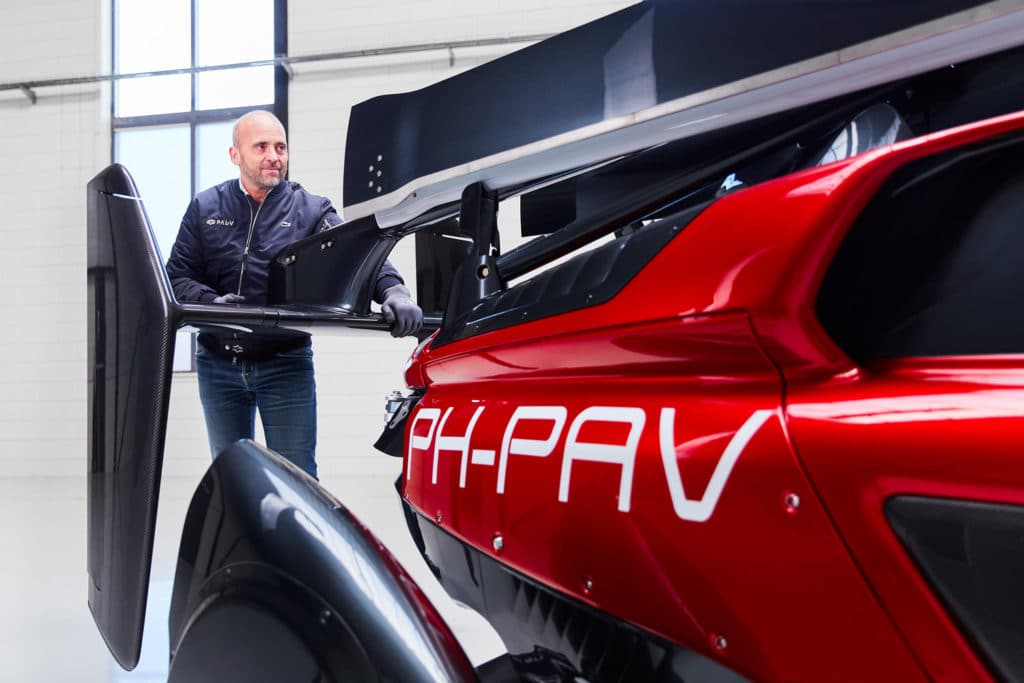
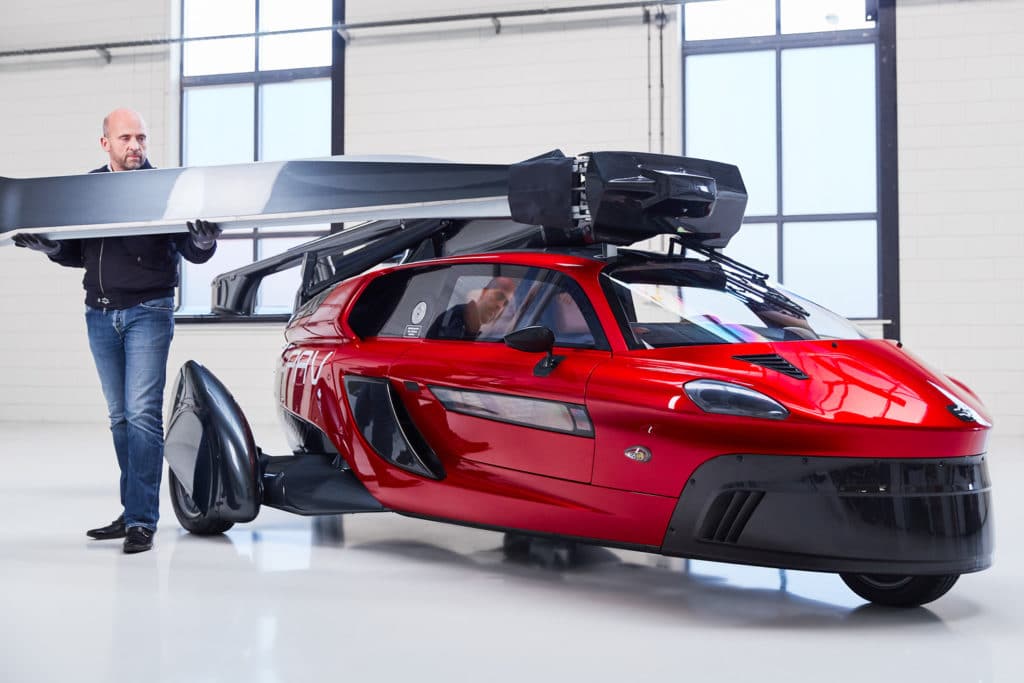
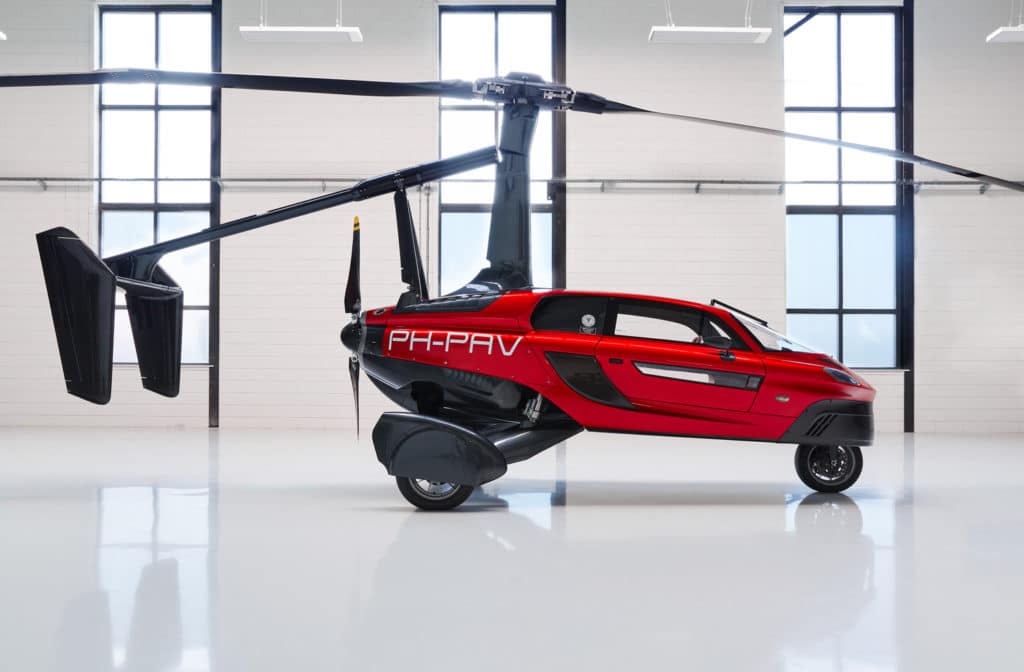
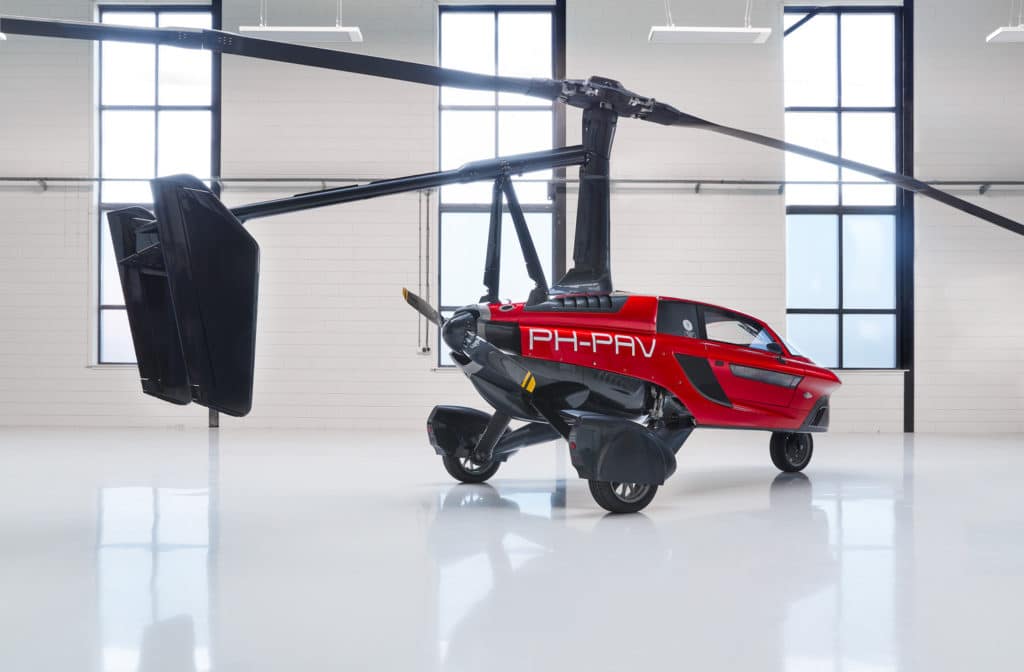

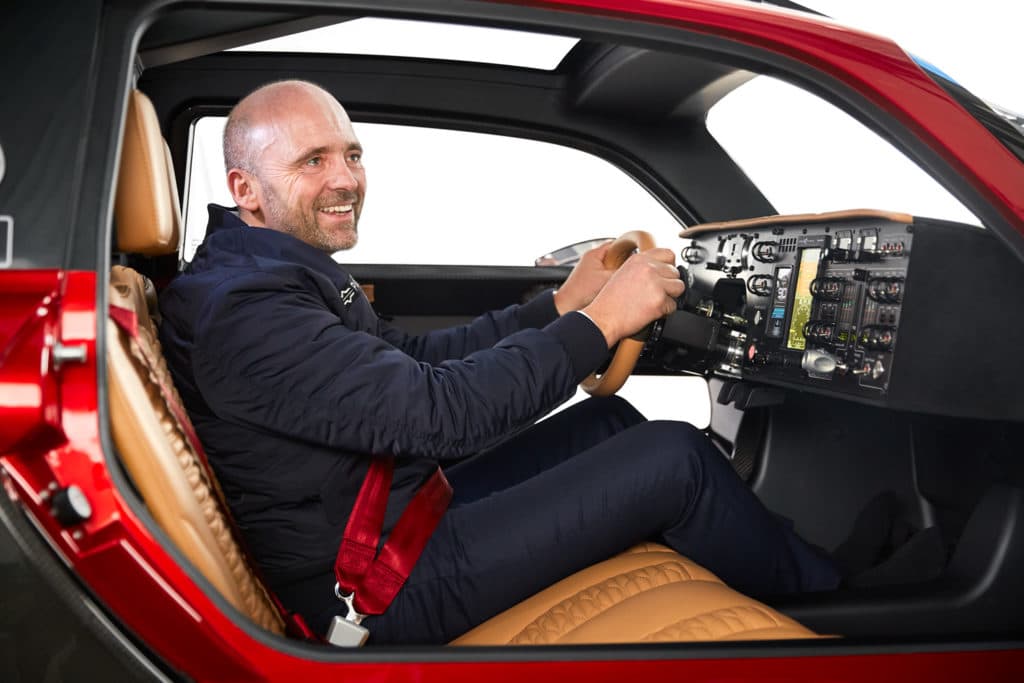
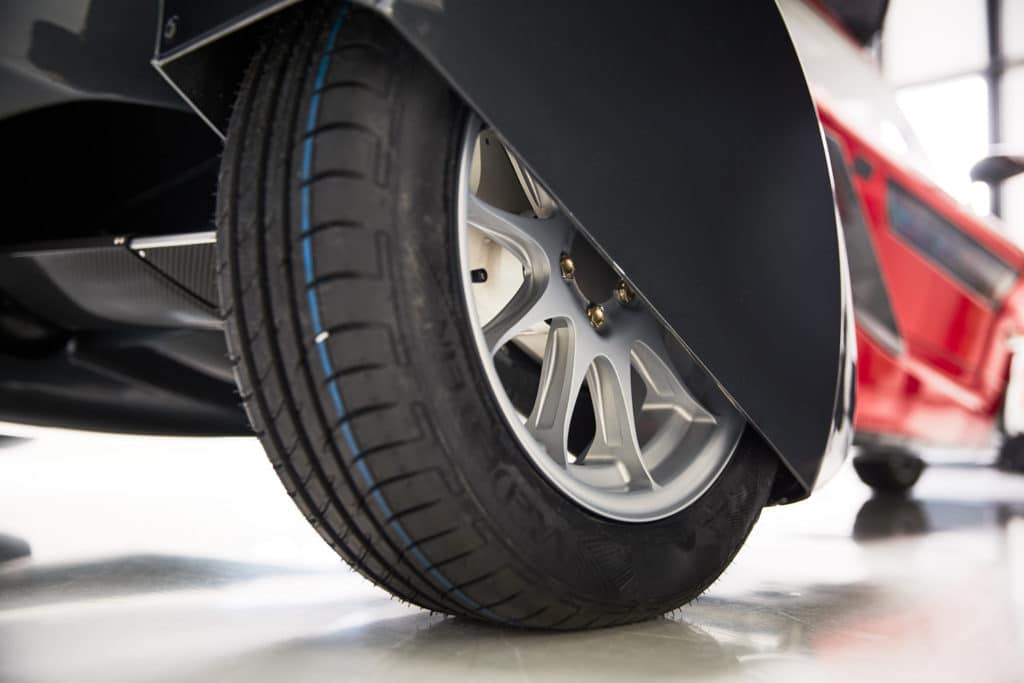
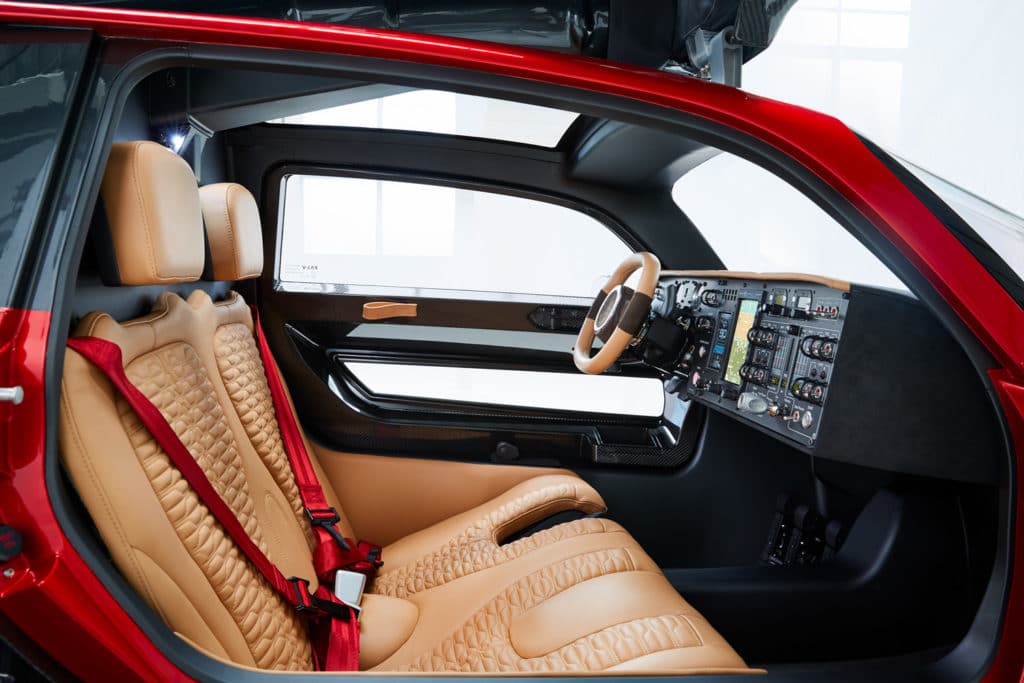
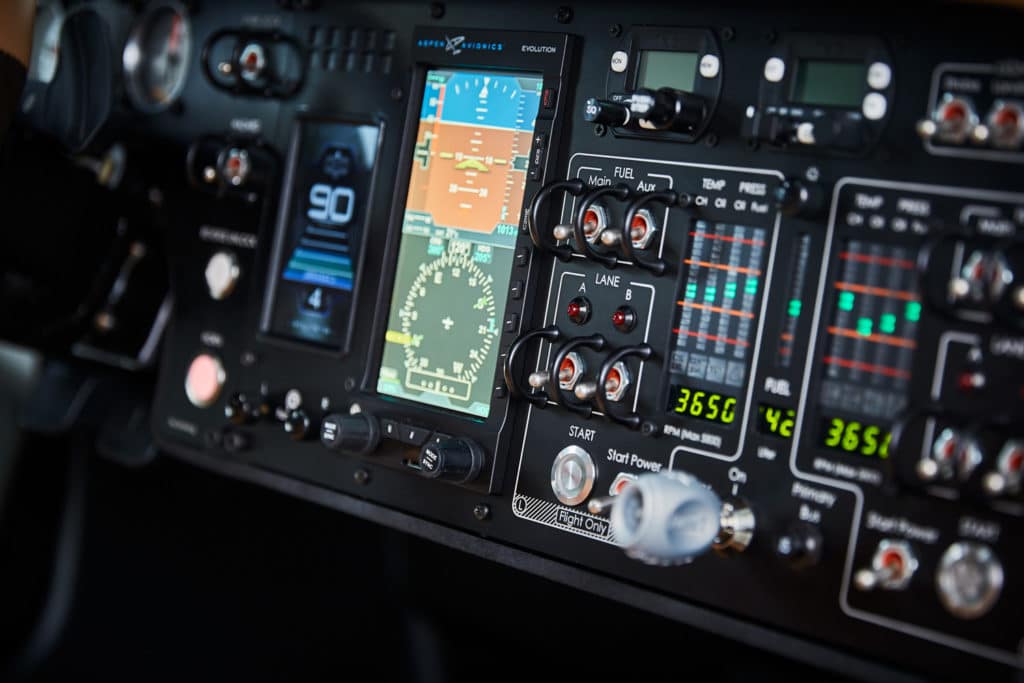
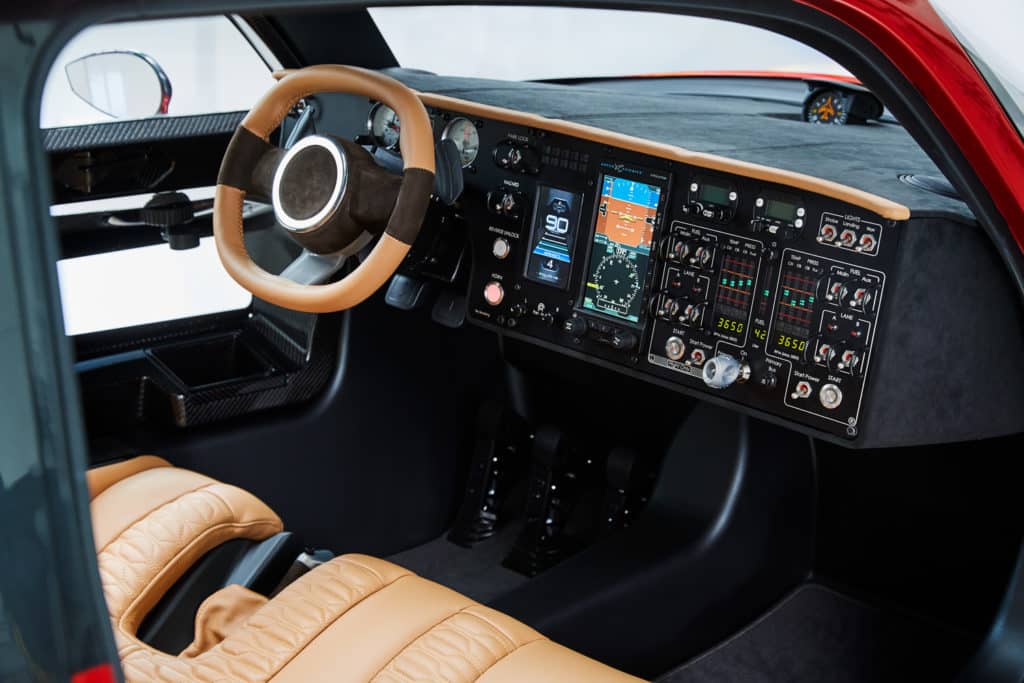
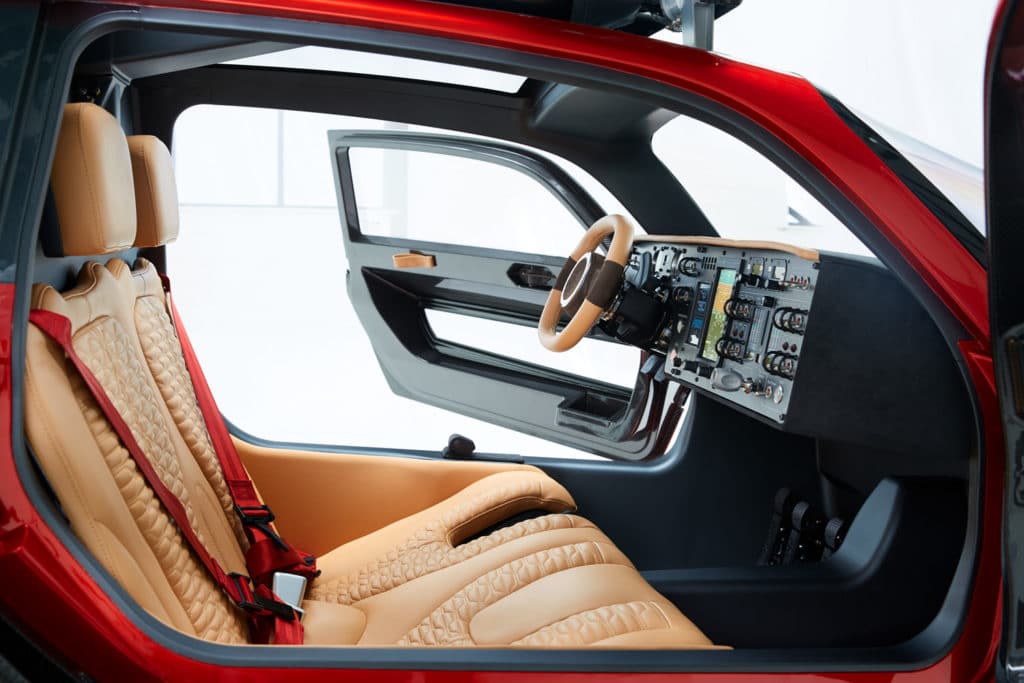


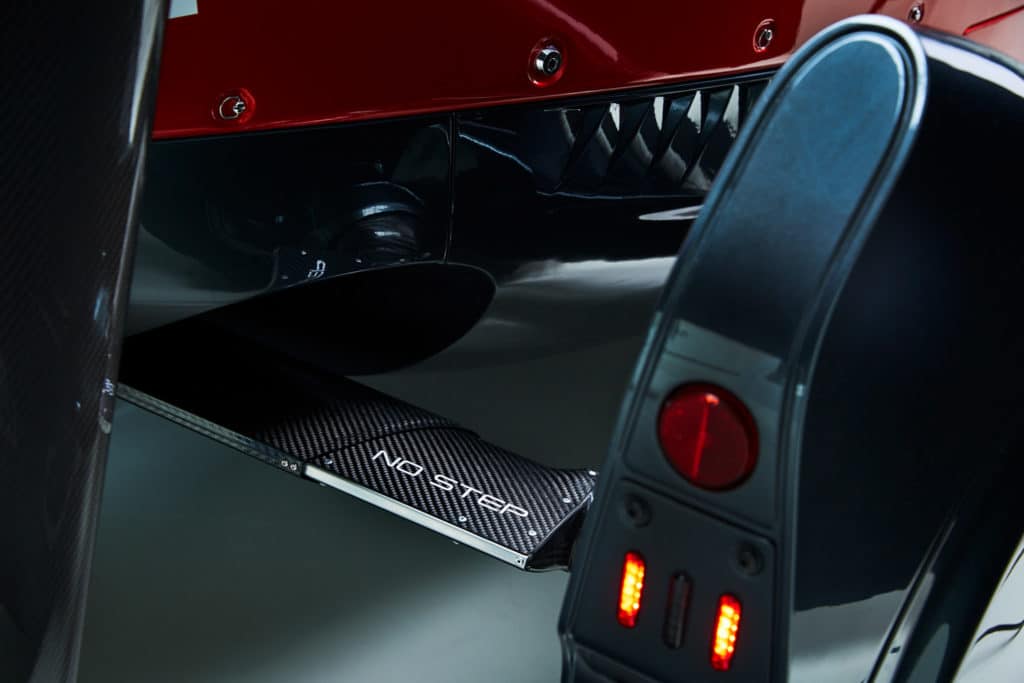
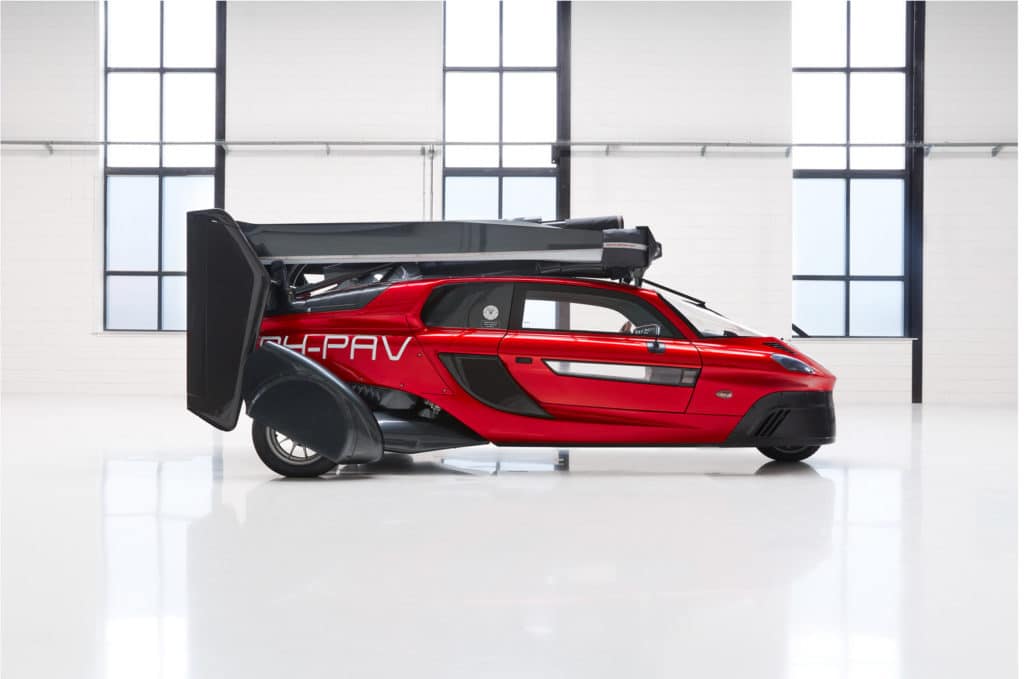
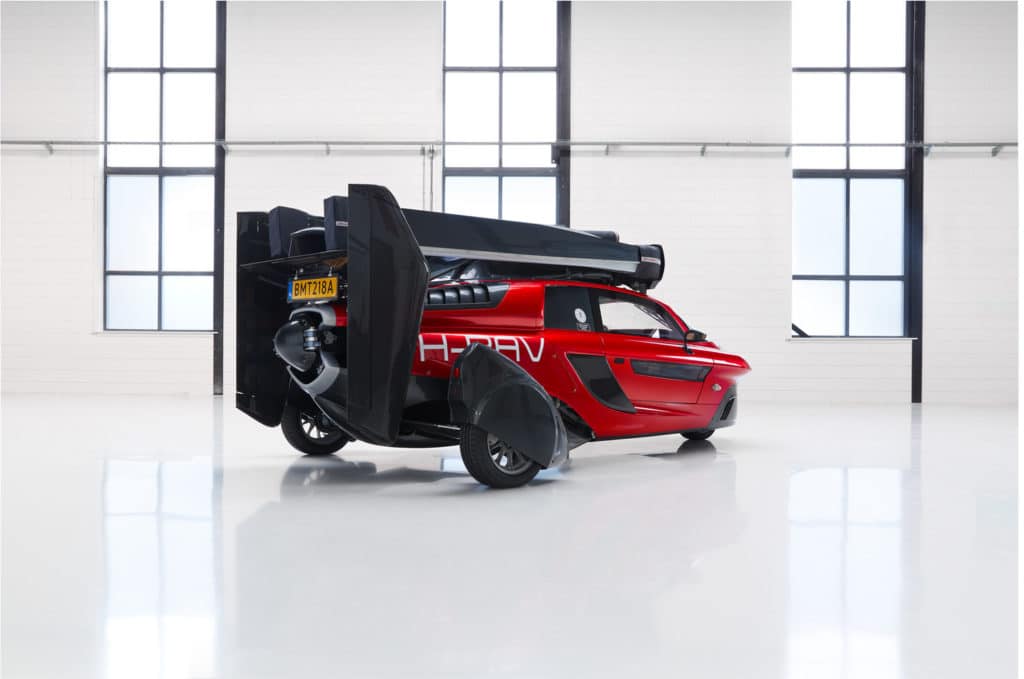
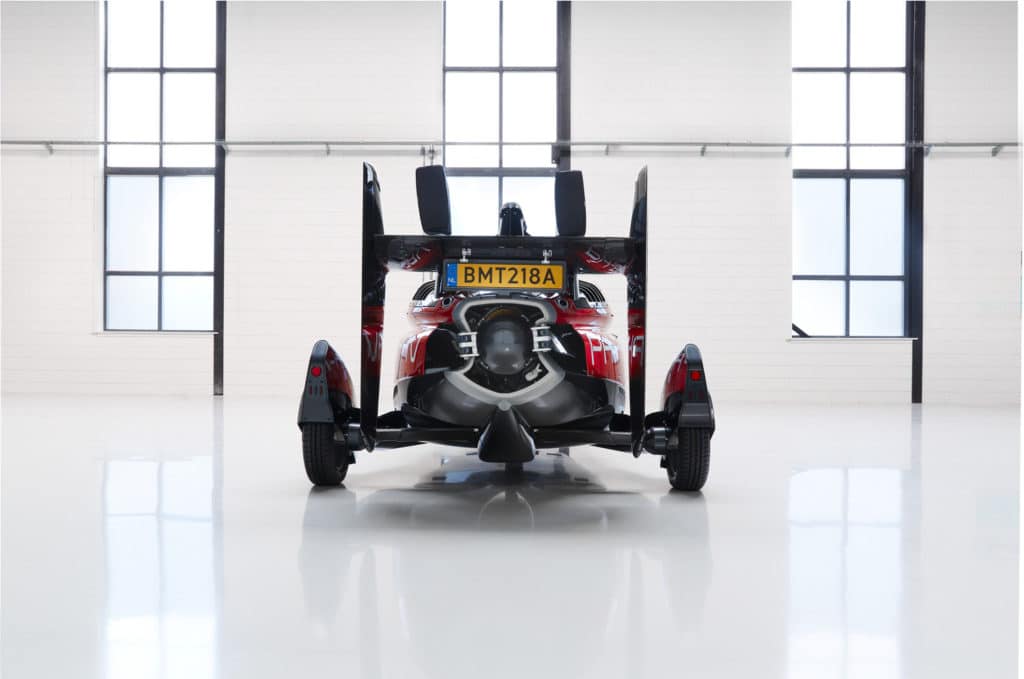
The company insists the Pal-V is not a helicopter, where blades are powered by an engine, but is a gyroplane in which the blades rotate thanks to airflow.
Even if both engines cut out, the blades will still turn. ‘The rotor is not powered, so it’s actually a parachute which is always available,’ Mr Dingemanse told AP.
Different versions of a flying car are being developed in the Czech Republic, Slovakia, Japan, China and the United States. The lucky owner will need both a driving licence and a pilot’s licence.
But with the keys in hand, the owner will be able to drive to an airfield for the short take-off and, after landing elsewhere, drive to the destination in a door-to-door experience. Parts are on order, with the first already in stock.
Once built, the vehicle will have to complete at least 150 flying hours, and undergo extensive tests to receive its certification from the Cologne-based European Aviation Safety Agency (EASA). Once finalized, this will allow them to certify under FAR 27 regulations in America.
The 27-gallon gas tank provides a flying range of between 248 an 310 miles at an altitude of up to 11,500 feet. On the road, it can drive for up to 750 miles.
KUWAIT AIRWAYS AND PAL-V BRINGING FLYING CARS TO THE GCC
Kuwait Airways will start to explore the possibility to use the PAL-V for their own operation offering their customers a “last mile” solution. “Because the PAL-V can use the same airports that we are using it is a vehicle that can provide our customers with a “last mile” solution. FlyDriving them to where they need to go. Which will offer our customer a door-to-door journey instead of airport to airport.” Says Kamil H. Al-Awadhi, CEO of Kuwait Airways. The PAL-V only needs a small airstrip of 300m long in order to take-off and land which doesn’t need to be a paved runway. The strips can be created in close proximity to urban areas where people are not disturbed by the presence of the airstrip. PAL-V can drive the last mile to the destination, making the PAL-V a true door-to-door solution for the airport-to-city journey. The PAL-V can reach a landing strip near a city 400km away in just 2.5 hours, after that the conversion only takes 5 minutes and you can drive your last miles into the city.

Aviation
South Korea Introduces Cutting-Edge MRO Center for F-35 and IAI

South Korea is set to make waves in the aerospace industry with the establishment of a cutting-edge Maintenance, Repair, and Overhaul (MRO) hub for F-35 fighter jets and IAI (Israel Aerospace Industries) aircraft.
Central to this initiative is the specialization in converting Boeing 777-ERSF, colloquially known as the “Big Twin,” from passenger to freighter configurations. Under the terms of the agreement, IAI will spearhead the conversion of six B777-300ER and B777-200LR aircraft annually, commencing in 2024. This strategic move is in response to the anticipated surge in demand for wide-body freighter aircraft capable of long-haul flights.
Furthermore, South Korea’s forward-looking vision extends beyond aircraft conversion, with plans to establish a Lockheed Martin F-35 maintenance, repair, and overhaul depot at Cheongju Air Base by 2027. This strategic move not only enhances the operational readiness of South Korea’s air force but also positions the nation as a regional hub for F-35 maintenance expertise.
In preparation for this expansion, thirty Republic of Korea Air Force (ROKAF) engineers and technicians are slated to undergo intensive maintenance training in the United States in 2025, a testament to South Korea’s commitment to fostering local expertise and talent.
IAI’s visionary approach to certification and collaboration underscores the potential for transformative change. With plans for the 777-300ERSF certification process set to unfold in Israel, followed by the rigorous scrutiny of regulatory agencies such as the US Federal Aviation Administration (FAA), the stage is set for the ‘Big Twin’ to soar to new heights of success.
In partnership with esteemed entities like STK and Incheon International Airport Corporation, this collaboration promises to unleash a wave of benefits, amplifying the resilience and competitiveness of the Korean aviation sector while catalyzing job creation and economic prosperity.
Aviation
Lockheed Martin Expresses Interest in Joining AMCA Project

Lockheed Martin, a leading global aerospace and defense company, is demonstrating its dedication to strengthening collaborations with India’s research, industry, and academic sectors. With its rich experience in the aerospace industry and renowned for building some of the world’s most advanced jets, Lockheed Martin is now exploring opportunities to contribute to India’s aerospace sector, potentially providing a significant boost to aerospace technology in the country.
Randy Howard, Vice President of Global Pursuits at Lockheed Martin Aeronautics, recently underscored their interest in exploring “advanced transfer of technology opportunities” with Indian partners, signaling a proactive approach towards fostering technological exchange and advancement in the aerospace domain.
India has been at the forefront of fighter jet development since the 1970s, having produced its own cost-effective fighter jets and combat helicopters, while continually upgrading to maintain competitiveness on a global scale.
Lockheed Martin stands as a dominant force in the aircraft industry, renowned for developing cutting-edge planes like the F35 and F22, some of the most advanced fighter jets globally. They’ve also contributed to projects like the South Korean KF21 aircraft for defense purposes through collaborations.
Now, Lockheed Martin has set its sights on India’s defense sector manufacturing processes, expressing interest in partnering with India on its most anticipated project, the Advanced Medium Combat Aircraft (AMCA), likely to be a 5th generation fighter jet for the Indian military.
Their proposed collaboration could involve a spectrum of advanced technologies, including the Auto Ground Collision Avoidance System (Auto GCAS), a life-saving technology that intervenes to prevent ground collisions, thus significantly enhancing flight safety for Indian pilots.
Lockheed Martin is extending its expertise to design and develop an indigenous cockpit for the F-21 fighter jets, which India is procuring. This collaboration with Tata also includes the development of fighter jet wings. Established in 2023, this partnership adopts a “Ground Floor Design” strategy aimed at equipping India with an in-depth comprehension of 5th-generation cockpit technology and Man-Machine Interface (MMI) systems.
As India’s Fighter jet program advances with finalized aircraft frame and engine prototypes, Lockheed Martin has expressed interest in joining the project. They see a groundbreaking opportunity in cooperative 5th Generation Fighter Development, potentially expediting the AMCA program’s progress through technology and expertise sharing.
Furthermore, Lockheed Martin is keen on collaborating on large-wing, jet-powered UAV platforms, which could enhance India’s unmanned aerial capabilities.
While discussions are ongoing, and specific collaboration details await finalization, this initiative represents a potentially transformative stride in India’s aerospace self-reliance journey and Lockheed Martin’s strategic engagement with the Indian market.
Aviation
Can Airline Seat Cushions Be Used As Life Jackets?

In the event of an aircraft ditching into water, there’s a common question: Can aircraft seats serve as an alternative to life jackets for flotation? The answer lies in understanding their respective functions.
While seat cushions can provide some buoyancy in water, they are not intended nor certified to function as life jackets. Their primary purpose is to offer cushioning for passengers during flight. On the other hand, life jackets are meticulously engineered to keep individuals afloat in water, equipped with buoyancy materials, secure straps, and reflective elements for visibility. They offer numerous advantages over mere cushions.
While a seat cushion might offer temporary assistance in staying afloat, it’s not a dependable substitute for a proper life jacket during an emergency. It’s crucial to utilize approved safety equipment when near bodies of water. A life jacket, designed to keep a person buoyant for extended periods, offers the rigidity needed for prolonged flotation and allows for easy movement of the arms to navigate effectively.
What fabric is used in aircraft seats?
Seats are meticulously designed to fulfill multiple purposes, ensuring passenger comfort, safety, and protection from unforeseen circumstances like fires and accidents. A typical design incorporates an aluminum frame with blocks of polyurethane foam affixed to it. Additionally, a layer of fire-resistant fabric, such as Kevlar or Nomex, is often applied over this framework, topped with a layer of cloth or leather.
Leather seats, while luxurious, are more expensive compared to traditional cloth seats. The majority of fabrics used in seat upholstery contain at least 90% wool fiber, with the remainder typically consisting of polyamide (nylon). Wool stands out as the primary fiber chosen for commercial airline seating fabric due to its desirable properties and suitability for such applications.
What is the lightest economy seat?
In recent times, airlines have been downsizing seat dimensions to accommodate more passengers, resulting in reduced cushion length and leg space. This contrasts with earlier times when airlines offered more generously cushioned seats and ample amenities.
According to Recaro Seats Company, their SL3710 model represents the lightest economy class seat available, weighing in at a mere 8 kg (17.6 lb.), setting a new standard in aircraft seating.
For individuals weighing more than 350 pounds, fitting into a standard economy-class seat can be a challenge due to the narrower dimensions. Economy seats, also referred to as “coach,” “standard,” or “main cabin” seats, typically range from about 40 to 48 centimeters in width, further emphasizing the need for more accommodating seating options.

